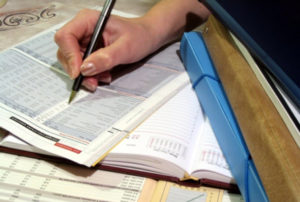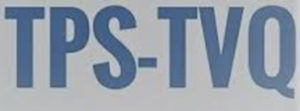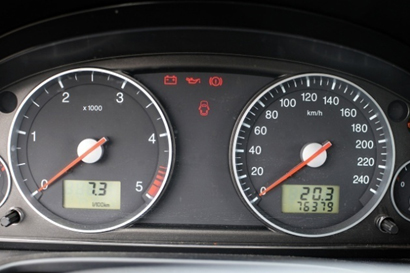Whether it is your first year in the massage or alternative medicine business or you have been active in the industry for many years, having good accounting practices can make tax time easy and almost hassle free – all while saving as much as possible on taxes. This article presents some simple and useful steps to follow that will help prepare you on this year on your tax journey.
When are my taxes due?
If you are self-employed, you have a bit more time to file your taxes than everyone else. Instead of April 30, you have until June 15. There is a catch: if you owe any money, which is almost always the case for autonomous workers, you will be charged interest on the amount owed as of May 1st. Therefore if you file after June 15, you will be charged a filing penalty along with interest.

What about charging GST/QST: when do I have to get my numbers?
If your total taxable revenue (before expenses) from all your businesses are $ 30,000 or less in the last four consecutive calendar quarters and in any single calendar year, you are considered a small business supplier and are exempt from charging GST and QST.

You must register for a GST/QST numbers if your income exceeded more then $30,000 during the year. Once your income surpasses this amount by even one dollar you must apply / register for your GST/QST number and proceed to collect taxes from all your customers or absorb sales taxes into your rates. If you are less than $30,000 it is better not to register for a GST/QST number as it is a hassle to both collect the taxes and submit your quarterly remittances. If you have registered for a GST/QST number and you experience a drop-in income, you must have at least 1 year or 4 quarters where your income is less then $30,000 to request to cancel your GST/QST number.
Think of Tax Season All -Year-Round
Tax season comes every spring. However, you should be planning for tax time all year around by collecting GST/QST (when applicable), keeping receipts (super important) and purchasing items and services that are legitimate write-offs. Of course you must also ensure that you are paying your tax instalments, if needed.
Here are some simple steps to follow that could help
prepare for your income tax declaration this year.
1
Mixing business with pleasure
A common challenge of being self employed is mixing personal and business expenses, or being unsure how much can be allocated. Keep expenses separate by using a dedicated bank account or credit card to buy things for your business, as it can be difficult to keep expenses separate when tax time comes around. To make this much easier, and to avoid accidently writing off a personal expense as a business expense, you should get a second credit card (or an additional bank account). Having personal and business expenses on one card will cause additional problems if you are ever audited.
2
Leaving a Paper Trail
During the year, keep all receipts related to your business’ purchases. If you are not sure, it is better to keep everything rather than miss out on savings later. If you don’t want to keep a paper copy, you can scan them or keep receipts in a special email folder. Note that as an AQTN member, you have free access to an online platform that allows you to record your expenses in categories and to run reports. For those members who use the free online tool, which also allows you to make back-ups of your data, you can quite literally keep a single box and put all your receipts into the box after entering the data into the system, which is user-friendly, easy and simple to use. When you are ready, you can run a report to generate a list and bring it to your accountant. With AQTN’s platform, it’s really that simple – you may never have to open your box containing paper receipts ever again!
When you are preparing for your taxes, you should classify your expenses into categories (this is automated in the AQTN platform). It is best to classify them based on the categories available on the Canadian Revenue Agency website. By being organized and pre-classifying your expenses, along with adding up the totals for each of the categories, you can save money with your accountant. Using AQTN’s online platform does this for you.
To help you keep accurate book keeping records, it is a good idea to consider using a spreadsheet, such as Excel, or even purchasing an account software to keep your expenses in order. Again – AQTN members using the platform do not need to do this. In addition, the platform allows members to send electronic receipts, take client notes, record income and generate various different reports. By keeping your online account up to date, when it comes time to prepare you taxes, you are a few clicks away from being ready to hand over your paperwork to your accountant, or the accountant recommended by the association. For 2019, the cost was 65$ for a basic return. In 2020, the price will remain the same at 65$.
3
Difficult expenses (the ones accountants are most frequently asked about)
Home Office Expenses
If you are self employed and work from home, you can deduct a portion of your home under office expenses. The portion of Home office expenses that can be deducted is determined by dividing the area of your home office by the total area of your home.
Example: John is a massage therapist who works out of his own home. His home office takes up 25 M2 of his 100M2 house (25%). If John has office related expenses that total $15,000 during the year, he could deduct $3,750 ($15,000 x 25%).
The following household expenses can be deducted at the above %:
- Mortgage Interest
- Maintenance & Repairs
- Condo Fees
- Utilities
- Rent
- Home insurance
- Property/school taxes
Home offices deductions are one of the leading causes of auditing by the Canadian Revenue Agency. Claiming too much in this category will raise red flags. Make sure you do not claim dual purpose rooms, such as a bedroom or a kitchen. If you intend to designate a part of your house as a part of your home office, it can only be used for the purpose of business activities. If you are audited, they could ask you to submit a floor plan or pictures.
4
Vehicle Expenses
Another expense which, if claimed incorrectly, can raise red flags for an audit is vehicle expenses. If you are self-employed and use your car to see clients or pick up supplies, you can deduct some of the costs of owning or leasing a vehicle.
The following vehicle costs can be deducted for tax purposes:
- Repairs and maintenance
- Fuel
- Insurance
- Toll charges
- Parking
- License and registration
- Lease charges (limited to 800$ deduction limit)
The daily log should include:
- Date of trip
- Location of trip
- Kilometres driven during trip
- Purpose of trip

In order to claim any of these deductions you must keep a mileage log of the kilometres you drove for business purposes during the year and the total kilometres you drove during that same year.
The deduction is calculated as follows:
Driven for business purposes / Total KM’s Driven in the year) x 100.
For example, if you drove 10,000 KM for business purposes during the year and 20,000KM in total, then 50% of your vehicle operating costs can be deducted.
To calculate your total KM drove during the year:
Total KM from Odometer on December 31 – Odometer on January 1
Word of caution, be careful not to over claim in this category, revenue agencies know that no one only uses their personal car for business. Claiming too high a percentage in this category will be an automatic trigger for an audit. It is recommended not to claim more than 50%-60% of a vehicle for business use, unless you have impeccable record keeping.
5
Consider expert advise
If you are filling your taxes for the first time, consider filing with a tax professional. They will be able to guide you through what is legally allowed to be deducted and give you tax strategies that will work for you to insure a good outcome in future years. Even if you would prefer to file your taxes by yourself consider consulting with a specialist every couple of years to make sure you are up-to date on any changes to the tax act and you are not missing out on possible deductions.
AQTN has been offering and promoting the accounting services of Shamron for many years, you can find her contact information here:
To prove you are a member, she may ask you for your permit number, or may contact the association to confirm you are an active member. Accounting fees for massage therapists who are not members of AQTN will be charged the standard rate of 80$.
